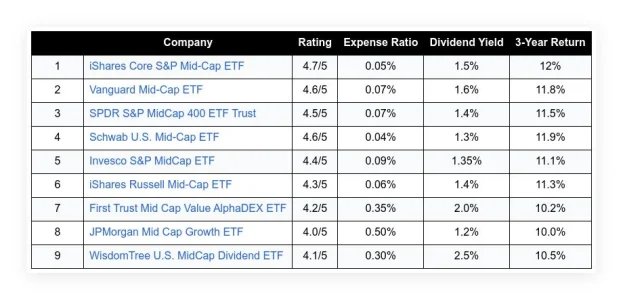Reverse mortgages let older homeowners cash out their home equity without selling their residences or taking on debt payments. However, the loans have costs and eligibility restrictions that can cause other solutions to be more favorable.
If you’re a homeowner thinking of taking out a reverse mortgage, here are the seven best alternatives to consider using instead.
Sell Your Home
Senior homeowners often become interested in reverse mortgages when they have trouble affording their living expenses. These loans can supplement your retirement income with recurring monthly payments or generate a large lump sum upfront.
However, a reverse mortgage borrower must stay in the same property indefinitely. If you’re interested in ever moving to a new location, selling your home may be a better way to liquidate the asset for several reasons.
First, assuming you can find a buyer, selling your home converts your equity into cash more efficiently than a reverse mortgage. The closing costs tend to be lower, so you get to keep more of your equity.
In addition, selling gives you the opportunity to move to a more advantageous location, which can be highly beneficial to older retirees. Typically, that means reducing your housing costs by downsizing to a smaller, less expensive property.
As Garit Boothe, finance writer and founder of Digital Honey, says: “If you’re looking to downsize for retirement, selling your home could actually be a great financial decision. It provides you with upfront cash for retirement activities, and it unburdens you from having to maintain your property.”
He continued, “Many of the financial aspects around retiring are complicated: 401(k) rules, navigating Social Security benefits, and dealing with healthcare costs. However, selling your home is one thing that is fairly straightforward, and it simplifies your life.”
Many senior retirees live in homes that are too big for them. For example, they might still be in the house where they raised their children long after they’ve moved out, in which case, those old bedrooms are probably sitting unused for most of the year.
Of course, there are many other ways that moving to a new home could be an improvement.
For example, you could move closer to the family members who support you, into a property that’s easier to maintain as you age, or to a lower cost of living area.
Ultimately, selling your home is usually the best reverse mortgage alternative for those who know they don’t want to stay in their current residences.
Home Equity Loans
Home equity loans are one of the classic forms of home equity financing. Like reverse mortgages, they can convert the funds you’ve put into your home back into cash, but there are significant differences.
The most notable is that home equity loans force you to start making a monthly mortgage payment of principal and interest after closing, just like a traditional mortgage. Meanwhile, reverse mortgages don’t come due until you no longer live in the home.
However, that doesn’t mean reverse mortgages are superior. Their costs are deferrable, but they’re still significant. Each month that your reverse mortgage remains outstanding, the interest rate and ongoing maintenance fees eat away at your home equity.
As a result, a reverse mortgage loan only really makes sense when you’re not concerned about leaving the property to your heirs. Using one means they have to pay off the balance once you pass away, which usually requires selling the property.
If you’d like to preserve the value of your home for future generations, you’d be better off with a home equity loan. It’ll set you back initially, but you’ll chip away at the balance over your remaining years instead of letting it grow unchecked.
In addition, home equity loan closing costs and interest rates tend to be lower than those of an equivalent reverse mortgage, so you’ll often save money in the long run.
That said, home equity loans are usually only helpful for financing large purchases like home improvements since they pay out a lump sum. If you want help financing your day-to-day expenses, you’ll need to go in a different direction.
Use a HELOC To Buy an Investment Property
A home equity line of credit (HELOC) is another classic form of home equity financing. However, instead of converting your equity into cash immediately, HELOCs use it as collateral for a revolving credit account, similar to a credit card.
You can borrow against the account whenever you need additional funds, pay back the balance, then repeat the process. You’ll only accrue interest on the amount you borrow, though there may also be a fee for each withdrawal.
That said, HELOC terms can vary significantly between lenders, especially regarding their repayment requirements. Make sure you review the details thoroughly before committing to one.
The flexibility of HELOCs makes them an incredibly useful credit account for many retirees. While they’re still too cumbersome to use for your daily spending, they can facilitate many different transactions.
One great way to use a HELOC is to purchase an investment property. If you can leverage your existing equity to acquire a cash-flowing rental, you can use real estate to fund your retirement.
While you can structure a reverse mortgage as a line of credit, the terms likely won’t be as favorable. Reverse mortgages tend to be more expensive than other forms of home equity financing like HELOCs, though both usually have variable interest rates.
As a result, HELOCs are a much more popular way to access home equity in the United States than reverse mortgages. In 2020, there were approximately 869,000 HELOC originations, while there were only 43,000 reverse mortgages.
Rent Out Extra Space
Selling your home and moving to a new place is an effective financial strategy for seniors with space that’s going to waste. You can use the opportunity to lower your housing expenses by moving to a smaller home or a lower cost of living area.
However, selling your home isn’t the right move in every case. Some seniors already live in an ideal property. Others would rather stay in their homes despite some downsides to be close to family, avoid the stress of a move, or for sentimental reasons.
In these cases, renting out the extra space in your home may be a better solution than selling. While it doesn’t have the same potential for generating a significant lump sum, you can create monthly cash flow to offset, or even, eliminate your housing costs.
Fortunately, it’s easier than ever to rent out part of your home with platforms like Airbnb and VRBO. Because they’re short-term rentals, you can always try them out for a day or two.
If you need another incentive, your earnings will be tax-free if you rent out your extra space for fewer than 15 days of the year.
If you don’t feel comfortable sharing your personal space with strangers, consider investing some money in the property to give yourself some separation. You might be able to cordon off a section for guests with some drywall and a second entrance.
Short-term rentals can be surprisingly lucrative for seniors with spare rooms, basements, or mother-in-law units. Just keep in mind that it’s not a legitimately passive source of income, as you’ll essentially become a part-time property manager.
Borrow Against Your Life Insurance Equity
Permanent life insurance policies include what’s known as a cash value that functions similarly to an investment account. A portion of your premium payments goes toward it, and the accumulated funds can generate interest over time.
As a result, permanent life insurance policies are more expensive, but they give you the ability to tap into an extra cash reserve when you need liquidity. Generally, you can do so using either of the following methods:
- Draw: You can usually withdraw funds from your cash value up to your contributions without penalty, but it reduces your future death benefit. In other words, your beneficiaries will receive less money when you pass away. Taking out too much could cause the provider to terminate your policy.
- Borrow: Policyholders can also choose to take a loan from their cash values. The balance will typically accrue interest, but your death benefit should remain intact. However, if you die with the balance outstanding, it’ll be as if you took the funds as a draw.
Unfortunately, borrowing from your life insurance equity is only an option if you have a permanent life insurance policy with sufficient funds in its cash value. If you’ve only paid premiums for a few years or have a term policy, you’ll need to pursue a different option.
Get an Annuity
Once you’re retired, there’s little reason to take significant risks with your money. As a result, seniors usually prioritize financial security and portfolio preservation over aggressive investment growth.
In fact, security is one of the qualities of reverse mortgages that attracts seniors in the first place. You can use them to convert the equity in your home into a fixed monthly payment that’s guaranteed for life while paying nothing out of pocket.
Collecting your reverse mortgage loan proceeds in that way is known as an annuity plan due to the similarities between the two. As a result, if you’re interested in the arrangement, you may also want to consider a legitimate annuity instead.
Annuities are insurance products that fulfill the same purpose. They offer you guaranteed monthly payments for the rest of your life, ensuring you never run out of money. However, you pay for the accounts very differently.
To buy an annuity, you must make a series of payments or a lump sum investment upfront, while reverse mortgages liquidate your home equity. This makes more sense because you often depend on the payment method that would benefit you most.
That said, annuities and Home Equity Conversion Mortgage (HECM) loans, the most common type of reverse mortgage and the only one guaranteed by the Federal Housing Administration (FHA), are both infamously complex.
Significant due diligence is necessary to protect yourself if you’re interested in pursuing either of them. In fact, you must take specialized reverse mortgage counseling before a mortgage lender can give you an HECM.
Build Up Your 401(k)
Reverse mortgages usually come into play when your traditional retirement savings and Social Security benefits aren’t enough to support you. As a result, one of the best ways to avoid using them is to build up your 401(k) as much as possible while still working.
With the recent rise of remote work, there are many ways for seniors to generate meaningful incomes from the comfort of their own homes. For example, they could even start businesses providing consulting services or selling hand-crafted items.
As a result, more seniors are working nowadays than ever. Approximately 65% of consumers aged 55 to 64 participated in the workforce in 2020, alongside roughly 27% of those aged 65 to 74.
If you’re willing to put in a few extra years, even part-time, you can significantly reduce the likelihood that you’ll need a reverse mortgage in the future by putting every extra dollar you save into your 401(k).
Consumers over 50 can make an extra $6,500 catch-contribution on top of the standard $20,500 contribution limit, saving $27,000 each year. In the time it takes to earn a college degree, you could add more than $100,000 to your 401(k).
Assuming you invest those funds wisely, they could generate even more earnings, making a reverse mortgage increasingly unnecessary.
Conclusion
Reverse mortgages can be beneficial in some circumstances, but they’re notoriously complex, and the market is full of scammers looking to take advantage of vulnerable seniors.
Before you commit to a reverse mortgage, make sure you know what you’re doing and strongly consider the alternatives above.














